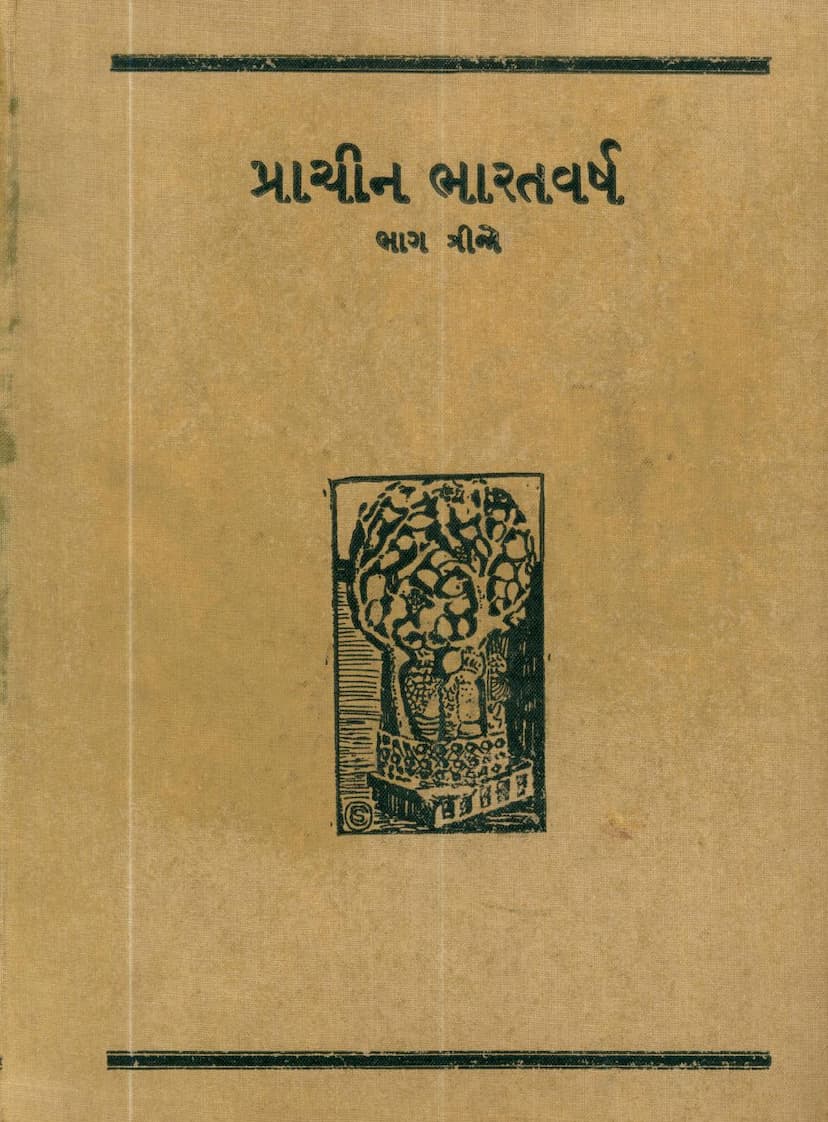Prachin Bharat Varsh Part 03
Added to library: September 2, 2025

Summary
Based on the provided Gujarati text, here's a comprehensive summary of "Prachin Bharat Varsh Part 03" by Tribhuvandas Laherchand Shah:
Overall Scope and Structure:
This third volume of "Prachin Bharat Varsh" covers the period from 900 BCE to 100 CE, a span of one thousand years. The author, Tribhuvandas Laherchand Shah, presents historical facts based on ancient inscriptions, coins, and authentic historical accounts, aiming for a novel perspective. The book is organized into five sections, though this third volume contains sections four, five, and six, completing the former and presenting the latter two entirely.
Key Content Areas Covered in this Volume:
- Section Four (Partial): Continues from the previous volumes, likely concluding any unfinished topics.
- Section Five: The Shunga Dynasty (Shungbhutya): This extensive section details the Shunga dynasty, dedicating five chapters to it. It aims to present previously unknown facts about this period. Key aspects covered include:
- Establishing the chronology and accurate lineage of the nine kings of the Shunga dynasty.
- Separating the individual lives and professions of Pushyamitra, Agnimitra, and Vasumitra, noting the considerable effort involved.
- Comparing the biographies of Patanjali and the comparison of their character.
- Introducing a new chapter related to King Kalki.
- Detailing the role of Chandrapati Demetrius and Menander during the decline of the Shunga empire.
- Section Six: Foreign Invasions and Peoples: This section covers the history of various foreign groups that entered India. It is divided into eleven chapters, with specific focus on:
- Yavanas (Greek): Two chapters.
- Kshaharata: Three chapters.
- Mathura and Taxila: Detailed accounts of these independent cities.
- Parthians: Two chapters.
- Sakas: Two chapters.
- Miscellaneous: The eleventh chapter covers miscellaneous matters. The author emphasizes that each chapter presents entirely new information.
- Illustrations and Maps: The book includes maps, ancient sculptures, and portraits of rulers. It also features a collection of coins, descriptions of which were not included in earlier volumes. The maps illustrate state expansions and geographical details, while the sections on Jebudvipa, Shakhdvipa, and Adhidvipa are highlighted as novel contributions.
Author's Approach and Philosophy:
- Scholarly Rigor: The author relies on ancient inscriptions, coins, and historical texts. He acknowledges the importance of these primary sources, noting that while inscriptions and coins provide more concrete evidence than legends, mathematical calculations are the strongest and most irrefutable proof for establishing timelines.
- Addressing Critiques and Debates: The author acknowledges and addresses potential criticisms and debates surrounding his work, particularly regarding the importance of religion in ancient Indian society and accusations of partiality. He references previous volumes for detailed rebuttals.
- Emphasis on Novelty: The author repeatedly stresses that the information presented in this volume, particularly in the Shunga and foreign invader sections, contains entirely new and previously unknown facts.
- Methodology: The author explains the meticulous process of preparing the book, including cross-referencing texts and potentially encountering challenges in dating and attribution. He acknowledges the difficulty in reconciling the findings of various scholars and aims to present a balanced view.
- Personal Touches: The author shares personal experiences, such as traveling to Mumbai and the challenges of integrating diverse information into a coherent narrative. He also expresses gratitude to those who assisted in the book's creation.
- Structure of the Series: The book is part of a larger series, with this volume being the third. The original plan was for four volumes, which was later revised to five to ensure consistent sizing of the books within the set.
Specific Details Highlighted:
- Mathura Lion Capital: The image on the cover is identified as the Mathura Lion Capital, also known as the "Undvastupa," highlighting its archaeological significance, antiquity, historical mystery, and the prominent role of those who participated in its installation.
- Siddhartha and Buddha: The text references the life of Siddhartha and the events that led to Buddha's enlightenment, including his encounter with the Four Sights.
- Emperor Priyadashin: The author discusses Emperor Priyadashin's reign, particularly focusing on the decline of the Mauryan Empire after his death and the subsequent emergence of smaller kingdoms. He also touches upon the administrative and policy decisions of Priyadashin, emphasizing his focus on "Dhamma" and his aim to unite ruler and ruled.
- The Role of Mathematics in History: The author highlights the importance of mathematics in historical dating and establishing timelines, suggesting that his research utilizes this method to arrive at his conclusions.
- Debate on Dates: The author acknowledges discrepancies in dating historical figures and events, particularly referencing the debate surrounding the dates of Ashoka and Priyadashin, and acknowledges the challenges in resolving such historical uncertainties.
Overall Tone and Purpose:
The author's tone is scholarly, meticulous, and dedicated to presenting a comprehensive historical account of ancient India. He aims to provide readers with fresh insights and clarify historical ambiguities. The inclusion of detailed notes and cross-references suggests a commitment to academic rigor. The text also reflects a personal journey of research and discovery.
This summary aims to capture the essence of the provided text, focusing on the historical periods, dynasties, figures, and the author's approach to presenting ancient Indian history.